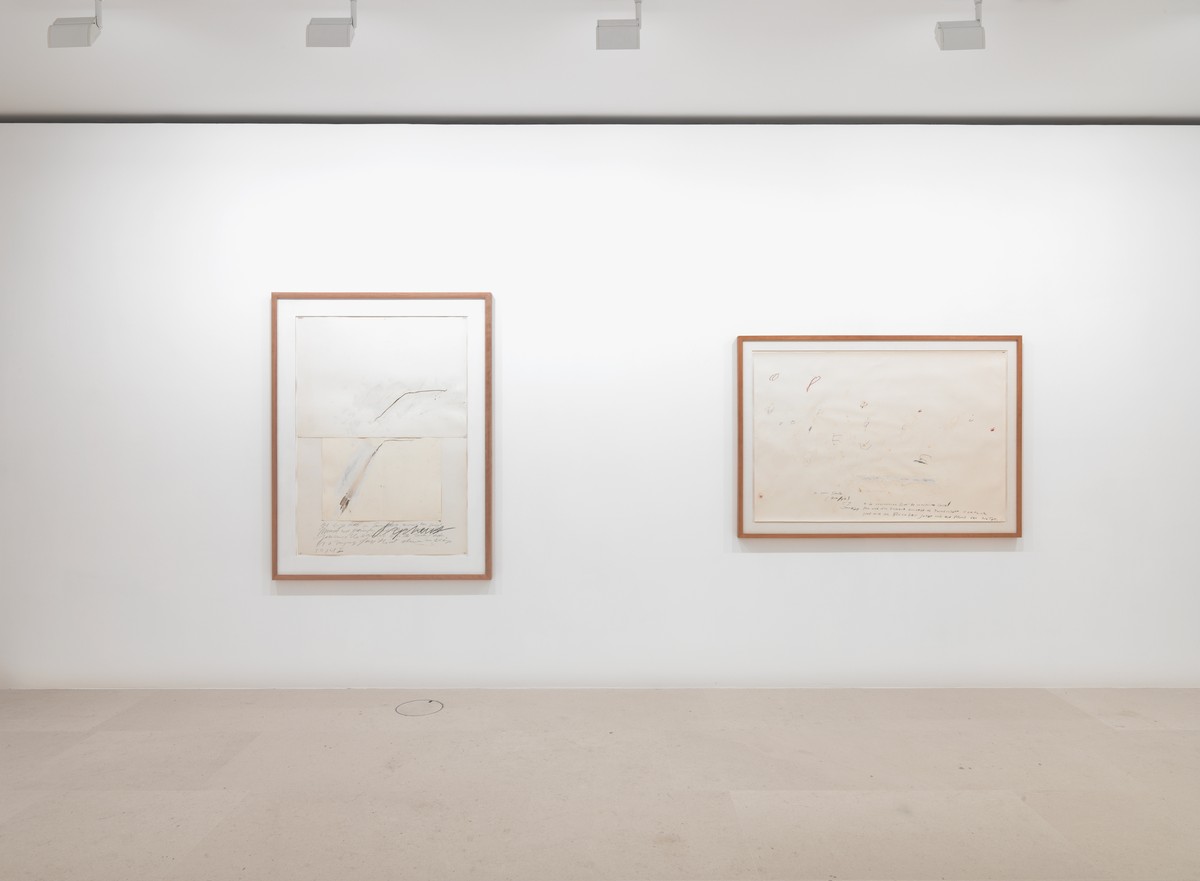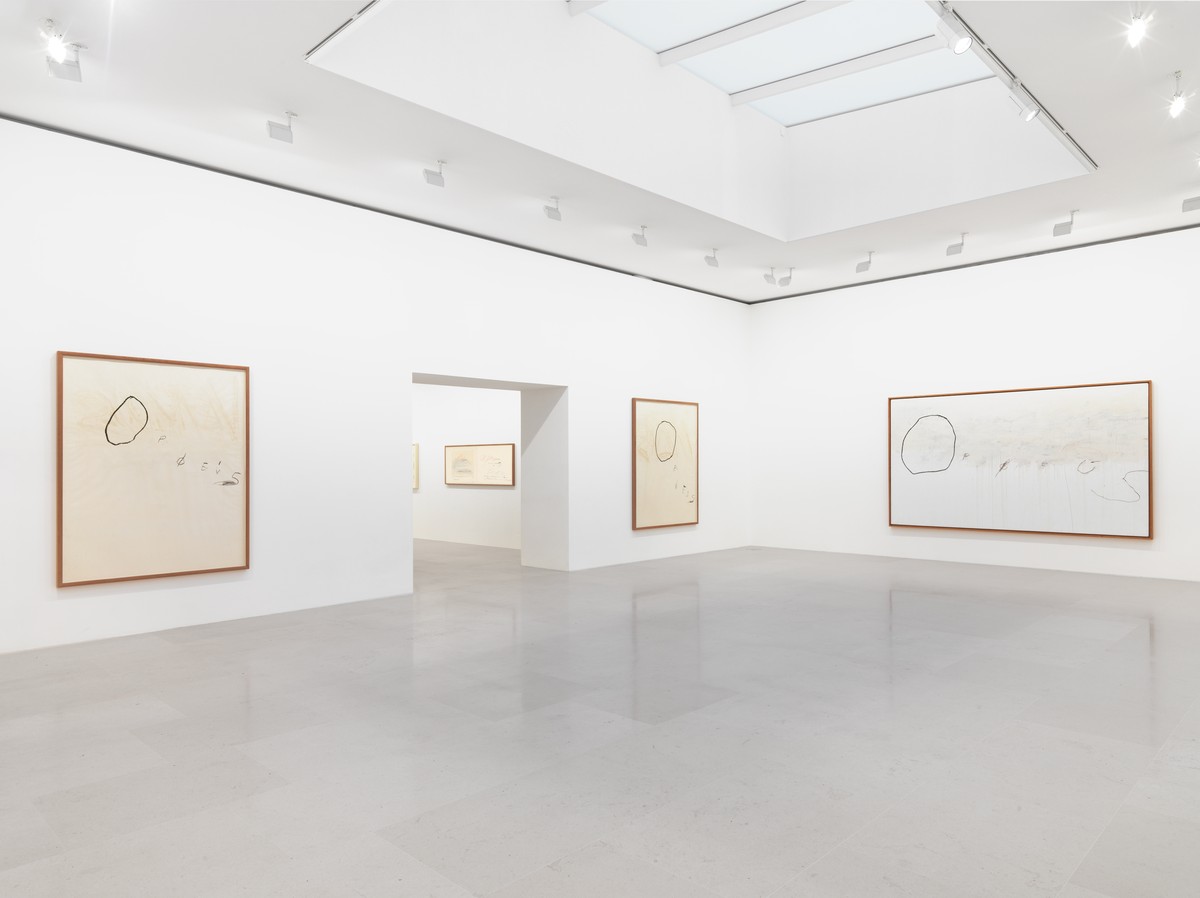Orpheus
An Exhibition of Works by Cy Twombly at Gagosian, Paris
Orpheus
December 1, 2016 – March 18, 2017
Gagosian Gallery, Paris

Courtesy Gagosian Gallery. Photo: Mike Bruce
From the press release
Oh you lost god! You unending trace!
Only because at last enmity rent and scattered you
are we now the hearers and a mouth of Nature.
—Rainer Maria Rilke, Sonnets to Orpheus
Gagosian is pleased to present an exhibition of paintings and works on paper by Cy Twombly. It coincides with the retrospective Cy Twombly, opening at Centre Pompidou, Paris, on November 30.
The selection of works, dating between 1968 and 1979, takes as its subject the figure of Orpheus. Orpheus, the mythic archetype representing the artist and the creative process itself was also the subject of Sonnets to Orpheus, a cycle of fifty-five sonnets written by Rainer Maria Rilke in 1922, which were of great inspiration to Twombly. The works on show have never been brought together until now.
Orpheus’s lyrical skills were such that he was able to convince Hades, god of the underworld, to return his wife and muse, Eurydice. Hades’s one stipulation was that Orpheus not turn to look at Eurydice as he walked back toward the world of the living. But Orpheus could not resist and she was cast back forever. Later, he would be torn apart by Dionysian maenads.
The myth of Orpheus also inspired French composer Pierre Henry’s musique concrète composition The Veil of Orpheus (1953). In his recording, Henry tore cloth to mark the moment when Orpheus lost Eurydice for the second time. The sound of the tearing cloth, symbolizing the rent between life and death, is transformed by Twombly into a painting of epic scale bearing the same title.
Rilke wrote of artists as links between the past, present, and future. In urgent gestures, Twombly was able to evoke centuries of historical record and artistic endeavor. In The Veil of Orpheus (1968), he traced wax crayon lines over panels of painted canvas, creating what he referred to as “a time line without time.” In the painting Orpheus (1979), he inscribed the name of Orpheus in the Cyrillic alphabet in an allusion to his eventual dismemberment. In his rendering of the Western myth, Twombly traces what Mary Jacobus has called, in her book Reading Cy Twombly: Poetry in Paint, “a two-way movement: infinity and forgetfulness; destruction and transcendence; ascent and descent.”
A fully illustrated catalogue will accompany the exhibition.
For further information:
Gagosian, Paris
gagosian.com

Courtesy Gagosian Gallery. Photo: Mike Bruce


